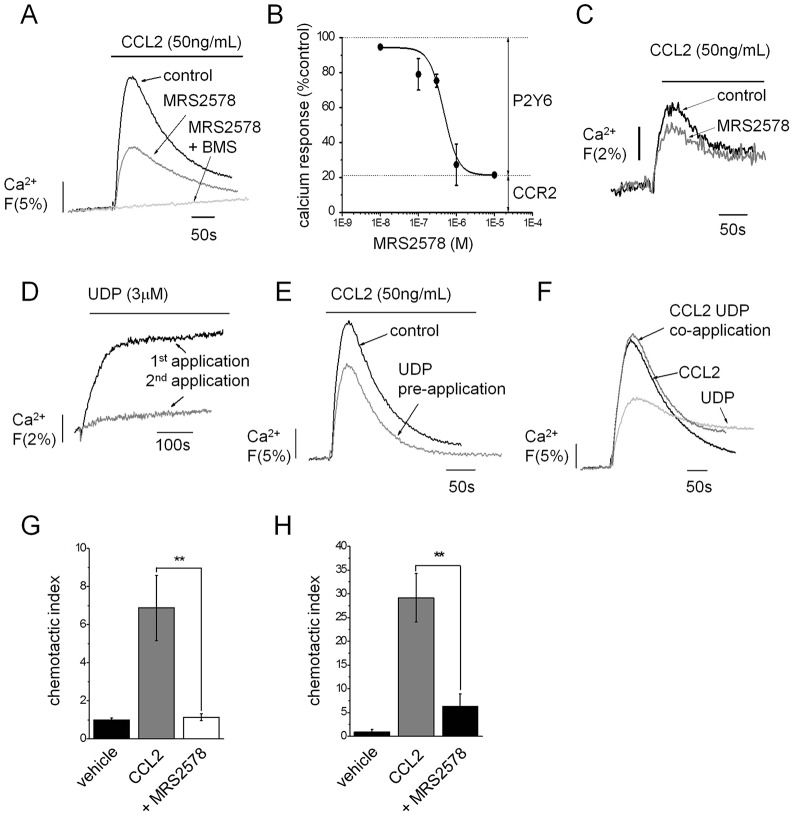Fig. 3.
P2Y6 receptor antagonism and desensitization suppresses Ca2+ signalling downstream of the CCL2–CCR2 axis. (A) Representative traces demonstrating the dependency of CCR2 and P2Y6 for CCL2-evoked Ca2+ signalling in THP-1 cells. Traces shown are for responses in the absence of antagonist (control), following selective P2Y6 inhibition (MRS2578, 1 µM) and following inhibition of P2Y6 and CCR2 receptors [MRS2578 + BMSCCR222 (BMS), 100 nM]. (B) Concentration–response relationship showing inhibitory action of MRS2578 on peak Ca2+ responses to CCL2 (50 ng/ml). The MRS2578-resistant component of ∼20% accounts for CCR2 activity (n = 3). (C) Representative trace showing inhibition of CCL2-evoked Ca2+ signalling in human PBMCs following P2Y6 inhibition (MRS2578, 1 µM) (n = 3). (D) Representative traces showing desensitization of UDP (3 µM)-evoked Ca2+ response in subsequent applications 10 min apart. (E) Representative trace showing effect of UDP (3 µM) pre-application (as in D) on CCL2 (50 ng/ml)-evoked Ca2+ response in THP-1 cells. (F) Representative traces showing lack of synergy between CCL2 (50 ng/ml) and UDP (30 µM) as revealed by co-application experiments. P2Y6 receptor inhibition (MRS2578, 1 µM) inhibition of THP-1 cell (G) and PBMC (H) chemotaxis towards CCL2 (50 ng/ml lower chamber, 2 h) in transwell migration assays (n = 3–4). Fluo-4 signals are normalised to the maximum Ca2+ response elicited by 40 µM digitonin. **P<0.01 (ANOVA). Data are presented as mean±s.e.m. All antagonists were pre-incubated for 30 min prior to agonist challenge.

